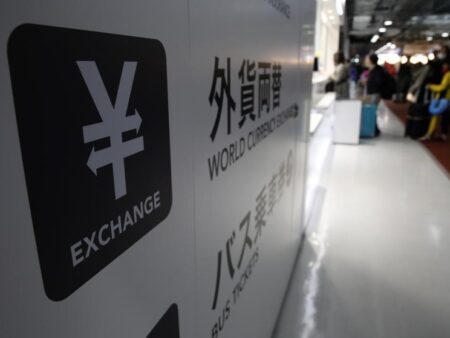By Makiko Yamazaki
TOKYO (Reuters) – Japan said on Wednesday that it conducted a record single-day yen-buying intervention in April, selling 5.92 trillion yen ($40.83 billion) worth of dollars in a fight against a falling yen at that time.
Quarterly data from the Ministry of Finance (MOF) showed that Japan spent a record 5.92 trillion yen on a single-day yen-buying intervention on April 29 and a further 3.87 trillion yen on May 1.
The previous single-day record for such intervention was 5.62 trillion yen spent on Oct. 21, 2022, according to MOF data available since 1991.
The latest data represent a detailed daily breakdown of the previously revealed 9.79 trillion yen intervention made during the period from April 26 through May 29.
The two rounds of massive dollar-selling intervention helped push up the yen by 5% from a 34-year low of 160.245 per dollar, but failed to reverse the yen’s longer-term weakness.
The yen resumed its downturn and slid to a 38-year low of 161.76 per dollar in July, prompting Tokyo to intervene again and spend another 5.53 trillion yen to support its currency.
Later in July, the yen staged a sharp rally as traders aggressively unwound carry trades after a slew of economic data raised the prospect of a U.S. economic downturn and bigger rate cuts from the Federal Reserve.
Separate data from the finance ministry on Wednesday showed that Japan’s foreign reserves fell to $1.22 trillion at the end of July, down $12.4 billion from a month earlier, largely due to a drop in foreign securities holdings.
The decline in reserves reflect the sale of its U.S. Treasury holdings to finance the dollar-selling, yen-buying intervention, analysts said.

Japanese authorities would not reveal the make-up of the country’s foreign reserves, but most of the foreign securities holdings are believed by economists to be in U.S. Treasuries.
($1 = 144.9800 yen)

















